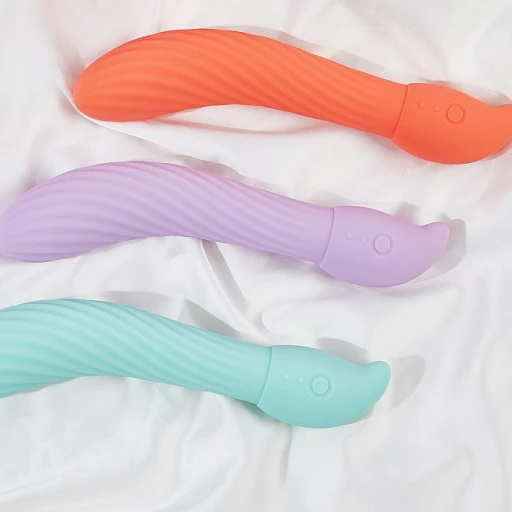Understanding the Basics of Homemade Sex Toys
Getting Started with Homemade Creations
Creating your own pleasure devices can be a rewarding and exciting endeavor. Whether you're looking to explore your creativity or simply want to craft something unique, understanding the basics is essential. Homemade sex toys can be as simple or as complex as you desire, and the process can be tailored to fit your personal needs and preferences.Materials and Tools
The first step in crafting your own toys is selecting the right materials. Common household items can often be repurposed into pleasurable devices. Silicone, wood, and body-safe plastics are popular choices due to their safety and versatility. It's important to ensure that any material used is non-toxic and safe for intimate use. Basic tools such as sandpaper, a drill, and a knife can help you shape and finish your creation.Designing Your Toy
When it comes to design, the possibilities are endless. Consider what type of sensation or experience you want to create. This could range from simple shapes to more intricate designs. Sketching your ideas on paper can help you visualize the final product. Remember to keep the user's comfort and safety in mind, ensuring smooth edges and a comfortable size.Budget-Friendly Tips
Crafting your own toys doesn't have to break the bank. Many affordable options are available for those just starting out. For inspiration and guidance on budget-friendly options, check out our smart budget picks for your first sex toy adventure. This resource can provide you with ideas on how to maximize pleasure without overspending. As you embark on this creative journey, remember that safety is paramount. In the next section, we'll delve into specific designs for both men and women, offering ideas and tips to enhance your homemade collection.DIY Sex Toys for Men and Women
Exploring DIY Options for Personalized Pleasure
Creating your own sex toys can be a deeply personal and gratifying experience. With a little creativity and some common household materials, you can craft toys that cater to your unique desires and preferences. Whether you're looking for something simple or more elaborate, the possibilities are endless. For men, consider transforming everyday items into a personal massager. A clean, sturdy sock and a soft sponge can come together to create a simple stroker. Wrap the sponge in the sock, secure it with elastic bands, and use lubrication for a comfortable experience. This homemade option is budget-friendly and easily customizable. Women can explore similarly straightforward yet effective options. Two sponges encased within a plastic bag and secured with rubber bands can serve as an impromptu masturbator. Be sure to use plenty of lubrication to enhance comfort and sensation. Another option is using the handle of an electric toothbrush as a compact vibrator. Crafting sex toys isn't limited to specific genders. Non-binary individuals can create toys that cater to their personal needs by using a blend of these techniques. A flexible silicone baking sheet can be transformed into a simple bondage wrap, or an empty and clean deodorant stick can be repurposed as a penetration aid. Ultimately, the beauty of DIY sex toys lies in their adaptability and affordability. With some creativity, you can design toys that meet your specific pleasure needs without breaking the bank. For more insights into the value of low-cost intimate products, check out our article on nurturing intimacy even with budget-friendly options. Creating homemade toys is about exploration and discovery, but it's also crucial to prioritize safety in your crafting endeavors. Refer to our section on ensuring your homemade toys are safe for vital precautions and tips.Safety First: Ensuring Your Homemade Toys Are Safe
Prioritizing Safety in Your Creations
Creating your own sex toys at home can be an exciting venture, but ensuring their safety is paramount. While the first two sections provided guidance on making homemade toys, it's crucial to address safety concerns as we delve deeper into the process.Material Considerations
When it comes to materials, not everything found around the house is suitable for intimate use. Opt for non-porous, body-safe materials such as silicone, stainless steel, or good quality plastics to prevent bacterial growth and irritation. Avoid items that might splinter or degrade over time, such as wood or certain plastics. For a more comprehensive guide on safe and satisfying budget options, visit our guide to frugal frolicking.Cleaning and Maintenance
Proper cleaning and maintenance are essential to ensure your homemade toys remain hygienic. Clean toys before and after each use with warm water and an antibacterial soap. For items made from materials like silicone or stainless steel, consider boiling them in water for a deeper clean. Always let your toys dry thoroughly before storing them in a clean, dry place.Testing and Tuning
Before using any homemade toy, test it to ensure there are no sharp edges or defects that could cause harm. It's also important to listen to your body – if something doesn't feel right, stop using it and reevaluate the toy's design and materials. Remember, while homemade toys can be a great way to explore personal pleasure, safety must always be the top priority. By adhering to these safety measures, you can enjoy your creations with peace of mind and foster a more satisfying and secure experience.Personal Stories and Experiences
Connecting Through Shared Journeys
Creating homemade sex toys can be a deeply personal journey, and many enthusiasts find it rewarding to share their experiences with others who have embarked on similar paths. Personal stories offer invaluable perspectives, from the initial curiosity and creativity that drives someone to make their own toys, to the tangible and emotional outcomes that result. One common theme among those who have crafted their own pleasure devices is the profound sense of accomplishment and intimacy achieved through personalization. Each creation is a reflection of individual desires and needs, allowing users to tailor their experiences in a way that mass-produced products often cannot. For instance, Jane, a DIY enthusiast, shared how creating her own toys helped her explore her own body more deeply. "I learned so much about what truly brings me pleasure," Jane explained, "and it was empowering to have complete control over the process from start to finish." By designing toys that cater to her unique preferences, she was able to unlock new dimensions of satisfaction. Similarly, Mark found that making his own toys answered a desire for the specific sensations he craved. "I was often left wanting more from store-bought options," he noted. "Building my own gave me the freedom to experiment until I found what worked best for me." This sentiment resonates with many who have taken the DIY route, where experimentation often leads to discoveries that traditional shopping cannot provide. These personal stories also highlight some common pitfalls, which we've explored in another section, such as choosing the wrong materials or neglecting safety measures. Overcoming these challenges often results in a stronger community, as individuals share tips, advice, and support. The camaraderie in this niche community is not only encouraging but also educational, as experienced makers offer guidance to those just beginning their journey. By exchanging ideas and insights, they cultivate a wealth of knowledge and creativity that continues to inspire more personalized approaches to pleasure.Common Mistakes and How to Avoid Them
Learning from Experience
One of the valuable aspects of embarking on the journey to create your own pleasure accessories is learning from personal stories and experiences. While crafting DIY sex toys can be a rewarding experience, there are common hurdles that budding creators often face.One frequent mistake is using materials that are not body-safe. It's crucial to select materials that are hypoallergenic and non-porous, as this ensures both comfort and health safety. Reflect back on the importance of safety considerations mentioned earlier to avoid unwanted mishaps. Some DIYers accidentally overlook the hygiene factor, leading to uncomfortable or even harmful experiences. Always prioritize thorough cleaning before and after each use.
Another pitfall is not understanding the structural integrity of the toy. Homemade toys, if not crafted carefully, can break during use. Experimenting with prototypes and testing durability is key to avoiding such issues. Remember, it's worth spending that extra time in checking robustness as it greatly enhances your confidence and enjoyment.
Finally, many enthusiasts feel that their first creation isn't quite "right". Don't be discouraged; trial and error is part of the process. It's normal to refine your technique over time, learning what works best for you in terms of shape, size, and sensation. Opt for simpler designs initially to gain confidence, gradually advancing to more complex creations as you gain more experience.
To sum up, each attempt is an opportunity to learn and improve. Keep experimenting, stay open-minded, and enjoy the creative process as much as the end result, while always keeping safety at the forefront.






-large-teaser.webp)





